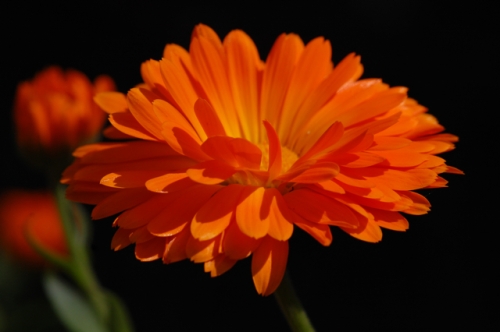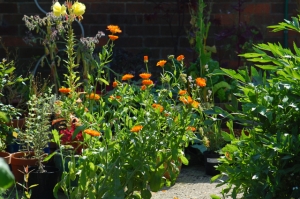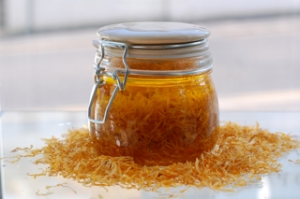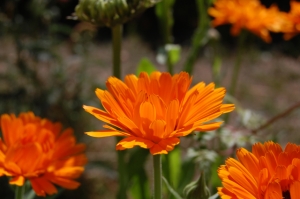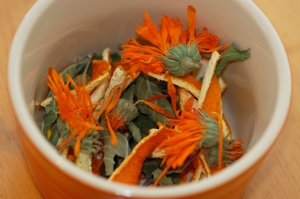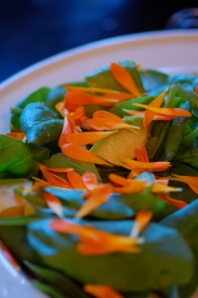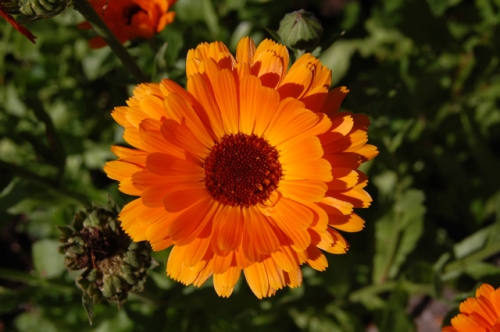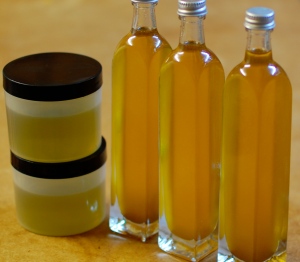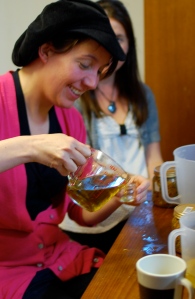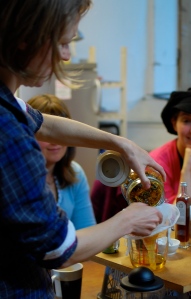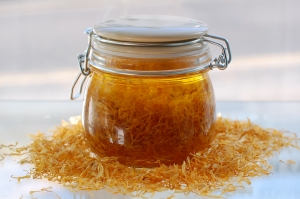I love to make up blends of herbal oils and often give the people I see a little bottle of something to use externally alongside taking their herbal tinctures or teas. It could be a neck and shoulder rub, a stomach massage oil, a foot massage oil or something for helping to heal scar tissue. I believe that taking some time to massage a part of your body that needs some love and attention is a wonderful technique for healing as it brings our awareness to the places that need it and encourages an attitude of self care and nurturing. The blend I have given out more than any other is my breast massage oil so I thought I would share the recipe with you here.
Before I started to see clients I don’t think I was really aware of how many women suffer from sore or tender breasts, often with lumps and swellings, which can vary a lot with hormonal fluctuations throughout their cycle. The breasts are made up of glandular tissue (which includes lymph nodes and milk producing lobes), fatty tissue and fibrous or connective tissue. The lymphatic system does not contain its own pump so it relies on the movement of muscles to keep it flowing nicely around the body. As there are no actual muscles within the breasts themselves, massage becomes even more important for healthy breasts and lymphatics.
You can use any nice base oils to perform the massage but herbal infused oils add extra therapeutic value alongside that special something which I like to think of as the plant’s own consciousness. The base of my breast massage oil is violet (Viola odorata) infused in sweet almond oil, though a good quality, organic sunflower oil could also be used quite happily.
If you don’t have any violet infused oil (and now is of course the wrong time to be making it from fresh) you can use dried plant material infused into the oil using the heat method which I outlined in this post. I personally prefer the fresh oil because the flowers impart a delightfully gentle aroma but using the dried leaf will still be effective.
Calendula oil, which can be found in many health food shops, makes a lovely substitution, especially when mixed 50/50 with lavender infused oil which can be made from dried flowers all year round. A small amount of yarrow or chamomile infused oil makes a useful addition if there is inflammation. Rosemary infused oil can be added at about 25% if there is a need to increase circulation and many people also recommend dandelion flower infused oil. Rose infused oil is another delightful addition, though I tend to stick with a few drops of the essential oil as it has a stronger aroma which resonates so much with the heart and with feelings of self-love. You can also add castor oil which is useful for removing congestion but, as it’s ridiculously sticky, I’d keep it to around 5%.
If you really want to keep things simple then stick with a plain almond, apricot or coconut oil, all of which have wonderful healing properties of their own.
The recipe I use as an all purpose breast massage oil is as follows:
28ml Violet infused oil
2ml vitamin E oil
2 drops each geranium and rose essential oils
Combine all the ingredients in a 30ml bottle and use to massage the breasts regularly.
Geranium essential oil is one of the best oils for balancing the endocrine system so is lovely for sore breasts due to fluctuating hormone levels. It also has a very balancing effect on the mind and emotions too.
When massaging the breasts I like to do a combination of circular movements with gentle kneading and a sort of pulsing action which is great at getting the lymph flowing. There is a good video here which outlines some techniques for this lymphatic pumping action.
Another great tip for getting the lymphatics flowing well in the breast area is to splash them with cold water after a hot bath or shower. Alternatively you can alternate a few splashes of hot water (though not unbearable of course) with cold water for a few minutes.
Finally, (in something of an aside) while we are on the subject of lovely ladies with voluptuous breasts, regular readers of this blog may remember the rescue hens we adopted during the summer. One of them, the delightful Primrose, has shot to stardom and is appearing in the British Hen Welfare Trust’s 2012 calendar, having fought off hundreds of other hopefuls to become Miss June.
This is how Primrose looked when we first got her:
And this is her calendar girl shot, only a couple of months later.
All the money from the sale of the calendars goes to support the charity, so if you or someone you know is a hen lover, you can pick up a copy here!





